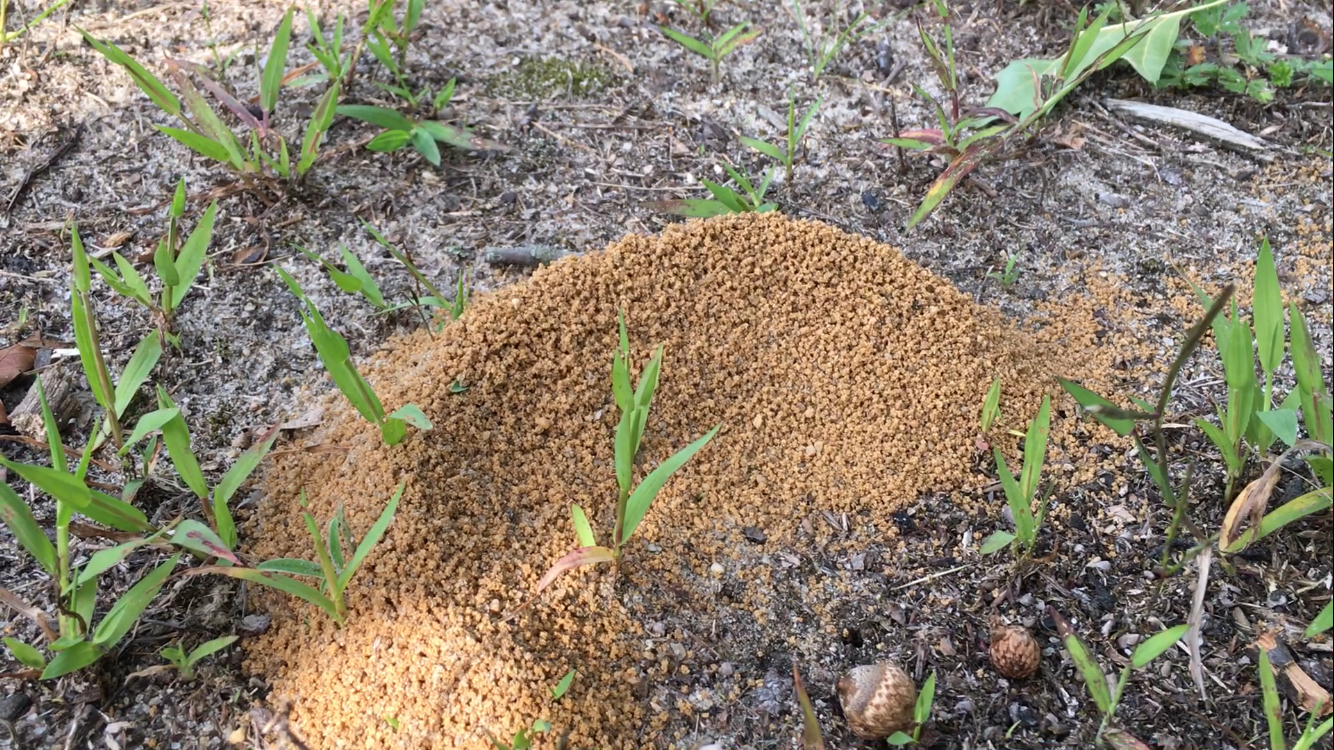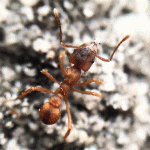- Formiculture.com
- Forums
- Gallery
- Members
- Member Map
- Chat

Trachymyrmex in NY
Started By
Flame.Hyped
, Sep 22 2017 8:08 AM
38 replies to this topic
#1
 Offline
-
Posted September 22 2017 - 8:08 AM
Offline
-
Posted September 22 2017 - 8:08 AM
Hey I'm a ny ant keeper and have been looking for trachymyrmex for quite some time, as they're apparently native to Long Island. I'm curious to find out if any ant keepers nearby have spotted any trachymyrmex activity. Thanks in advance.
#2
 Offline
-
Posted September 22 2017 - 8:19 AM
Offline
-
Posted September 22 2017 - 8:19 AM
oh wow I didn't mean to post this 3 times how do I delete posts
#3
 Offline
-
Posted September 22 2017 - 11:31 AM
Offline
-
Posted September 22 2017 - 11:31 AM
#4
 Offline
-
Posted September 22 2017 - 12:51 PM
Offline
-
Posted September 22 2017 - 12:51 PM
I'm form NY too, never knew we had fungus growers this far north.
I don't think I have ever seen any around. They do not look familiar to me at all.
Only T septentrionalis lives in NY.
Found this on Ant Wiki:
"In the northern part of its range, T. septentrionalis occurs exclusively on pure sand soils in open habitats and open woodlands of the Pine Barrens."
So I guess try sandy beaches a little inland?
McCook (1881) described the worker of T. septentrionalis based on material collected from Island Heights in the New Jersey Pine Barrens
I work right down there!! Will be chking it out next time I have to go into the office.
Edited by matt123, September 22 2017 - 1:03 PM.
- Evanthomas89 likes this
#5
 Offline
-
Posted September 22 2017 - 12:58 PM
Offline
-
Posted September 22 2017 - 12:58 PM
have you ever spotted a colony?
#6
 Offline
-
Posted September 22 2017 - 1:05 PM
Offline
-
Posted September 22 2017 - 1:05 PM
According to the forums chat: http://www.formicult...ngmating-chart/
Queens can be found from may-Aug
Edited by matt123, September 22 2017 - 1:06 PM.
#7
 Offline
-
Posted September 22 2017 - 1:09 PM
Offline
-
Posted September 22 2017 - 1:09 PM
Here is a research paper for you: http://www.asu.edu/c...rth America.pdf
http://www.bio.fsu.e...ions/2010-5.pdf
Look for more there are quite a few
Edited by matt123, September 22 2017 - 1:11 PM.
#8
 Offline
-
Posted September 22 2017 - 3:05 PM
Offline
-
Posted September 22 2017 - 3:05 PM
Thanks T.C and you too Matt, I'll look into the links and see if they help me out. Also no I haven't spotted them but they can't be far from me, gave you seen a colony ? if not best of luck finding a queen.
#9
 Offline
-
Posted September 22 2017 - 3:14 PM
Offline
-
Posted September 22 2017 - 3:14 PM
and funny that you mention pure sands inland, I have a lake not far from me but there are lots of ducks and some wild life. Any chance I'd stumble across a trachymyrmex colony ?
#10
 Offline
-
Posted September 22 2017 - 3:14 PM
Offline
-
Posted September 22 2017 - 3:14 PM
No I have never see one. Or at least don't think so, maybe I have but just never noticed.
I will keep my eyes pealed. And as I said, my office is right around that pine barrens place mentioned, so I may check it out one day at lunch next time I go to the office.
Will deff let you know what I find.
- Evanthomas89 likes this
#11
 Offline
-
Posted September 22 2017 - 3:22 PM
Offline
-
Posted September 22 2017 - 3:22 PM
Alright, I've heard they're more active in cooler temperatures so good luck. Get pics if you can
#12
 Offline
-
Posted September 22 2017 - 7:32 PM
Offline
-
Posted September 22 2017 - 7:32 PM
#13
 Offline
-
Posted September 23 2017 - 5:01 AM
Offline
-
Posted September 23 2017 - 5:01 AM
Flame.Hyped, on 22 Sept 2017 - 11:14 PM, said:
and funny that you mention pure sands inland, I have a lake not far from me but there are lots of ducks and some wild life. Any chance I'd stumble across a trachymyrmex colony ?
matt123, on 22 Sept 2017 - 11:14 PM, said:
No I have never see one. Or at least don't think so, maybe I have but just never noticed.
I will keep my eyes pealed. And as I said, my office is right around that pine barrens place mentioned, so I may check it out one day at lunch next time I go to the office.
Will deff let you know what I find.
Once you know what to look for they're pretty easy to find. Check out the video I made about them to see what the habitat I found them in looked like. I live out by the Pine Barrens so we have a mixture of Oak and Pine Trees. Where you find very sandy well drained soil and some shrubby plants along with prickly pear (that flat sort of cacti we have up here) find a large oak tree and look around under it. You'll find crescent moon shaped mounds.

- ColKurtz likes this
Check out my Youtube!
#14
 Offline
-
Posted September 23 2017 - 9:23 AM
Offline
-
Posted September 23 2017 - 9:23 AM
I don't think I have to add this but just in case..
If you do find them please don't dig them up "to see the fungus", I'm pretty sure this would be devastating to the individual colony and we don't know how stable these small local populations are or how widespread they really are until more of us find them. It would be a shame if one of the places where we can go to enjoy them and maybe even collect queens during flights next year got wiped out. They seem to have some pretty specific needs including the sandy soil, the prickly pear cacti always seems to be present, and they so far always appear under an oak tree and seem to need the caterpillar frass (probably one that eats oaks only) for the fungus garden. I really do look forward to seeing you all find some wild colonies to observe and help us all best understand what this species needs to survive so we can have the best chances of keeping them in captivity when we find queens.
- ColKurtz likes this
Check out my Youtube!
#15
 Offline
-
Posted September 23 2017 - 10:32 AM
Offline
-
Posted September 23 2017 - 10:32 AM
There have been journals on captive trachymyrmex colonies, they seem as if they have a strict and simple diet of plant life and rabbit droppings/ caterpillar frass. As for digging up a wild colony, I don't plan on it and I hope to catch some queens during a nuptial flight next year. Thanks for the tips
- Evanthomas89 likes this
#16
 Offline
-
Posted September 29 2017 - 12:01 PM
Offline
-
Posted September 29 2017 - 12:01 PM
There are pine barrens 20 mins away from me, I'll be checking the area out soon and let you guys know what I find
- Evanthomas89 likes this
#17
 Offline
-
Posted September 30 2017 - 4:48 AM
Offline
-
Posted September 30 2017 - 4:48 AM
Flame.Hyped, on 29 Sept 2017 - 8:01 PM, said:
There are pine barrens 20 mins away from me, I'll be checking the area out soon and let you guys know what I find
Awesome! I hope you find some. In my video I show the area I found them and the mounds so you know what to look for.
Check out my Youtube!
#18
 Offline
-
Posted October 1 2017 - 10:33 AM
Offline
-
Posted October 1 2017 - 10:33 AM
Good video, but what temp do they forage at? It's been cold and rainy recently so I haven't really been looking.
- Evanthomas89 likes this
#19
 Offline
-
Posted October 1 2017 - 10:49 AM
Offline
-
Posted October 1 2017 - 10:49 AM
Flame.Hyped, on 01 Oct 2017 - 6:33 PM, said:
Good video, but what temp do they forage at? It's been cold and rainy recently so I haven't really been looking.
so far I've seen them active on "cooler" days in the seventies, even one night I saw them after dark foraging in the high sixties.
Check out my Youtube!
#20
 Offline
-
Posted October 1 2017 - 11:42 AM
Offline
-
Posted October 1 2017 - 11:42 AM
Interesting. I'll look later this week
- Evanthomas89 likes this
0 user(s) are reading this topic
0 members, 0 guests, 0 anonymous users


















